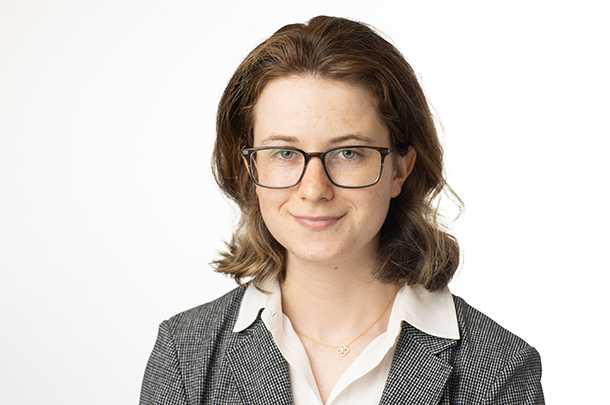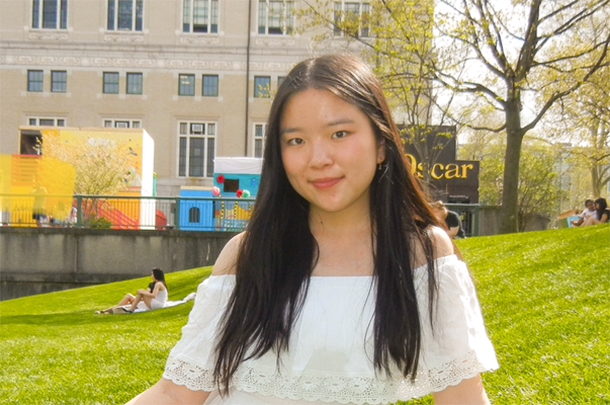Dassau and Liu named Berg Scholars
Lauren Smith
Oct 3, 2023
Undergraduate students Tal Dassau and Linda Liu were selected as Berg Scholars at the 8th Annual John Berg Chemical Engineering Undergraduate Research Symposium Poster Session.
The Berg Symposium is an opportunity for undergraduate researchers to share their results and practice professional communication skills. John Berg is a ChemE alum whose financial generosity has made it possible for the department to enhance its undergraduate research program.
All chemical engineering undergraduate students who conducted research at Carnegie Mellon during the summer of 2023 or the 2022-2023 academic year were invited to present a poster on their work. Dassau and Liu were selected from 17 posters by a panel of volunteer graduate student judges.
The Department of Chemical Engineering will provide travel and conference expenses for the Berg Scholars to participate in the Undergraduate Research Poster Competition at the American Institute of Chemical Engineers (AIChE) Annual Student Conference in Orlando, FL, in November.

Tal Dassau
Dassau is a senior majoring in chemical engineering, with an additional major in biomedical engineering. At the Berg Symposium, she presented an open-source, automated software for adipocyte and lipid tracing that she created in Rosalyn Abbott's lab.
"The tissue engineering field is moving towards 3D models because they're more representative of the architecture and natural environment within the body," Dassau says. "The existing imaging softwares, however, struggle with the new 3D models because of the depth and blemishes and shadows."
Because of that, labs have regressed to hand-tracing cells on computers. "With hundreds of cells per image, dozens to hundreds of images per session, that's really time consuming and tedious. In a field that's looking at disease modeling and interventions, it puts a bottleneck on progress," she says.
Dassau set out to automate this process and remove the subjectivity of manual tracing. Her PixCell software uses the metadata from an uploaded image to compute the pixel to micron ratio. It does a high contrast thresholding to capture the brighter cells, the ones that are on top and more in focus. Next, the software masks those cells, re-thresholds, and does a lower intensity capture for the cells behind. Lastly, it compares the two captures to make sure cells haven't been double-counted.
All the user needs to do is import their image and run the software. In seconds, they receive an output folder with labeled images and the associated data for post-processing and analysis. It's important to Dassau that the open-source software will be accessible to all researchers once it is fully published.

Source: Linda Liu
Linda Liu
Liu is a junior majoring in chemical engineering, with an additional major in biomedical engineering. She started working with Bob Tilton in the complex fluids engineering lab last fall and continued over the summer through the Chemical Engineering Summer Scholars (ChESS) program. Liu is studying the effects of phase separation on Marangoni synergism.
"A fluid flow called Marangoni spreading happens on a surface where there is a surface tension gradient from a non-uniform distribution of surfactant on a liquid surface. Surfactants are soaps, basically," she explains. "Marangoni synergism is where two surfactants mixed together spreads faster than either surfactant by itself."
Liu is observing how phase-separated solutions affect the speed of Marangoni spreading. "I'm using surfactants that phase-separate into solid and liquid phases when mixed together," she says.
Marangoni spreading plays an important role in a variety of surfactant applications such as pulmonary aerosol drug delivery, coatings, and agrochemical sprays. Many of these products are formulated with mixtures of surfactants to take advantage of synergistic surface tension reduction effects. Liu's work may improve the design of complex fluid products that rely on spreading at fluid interfaces.
